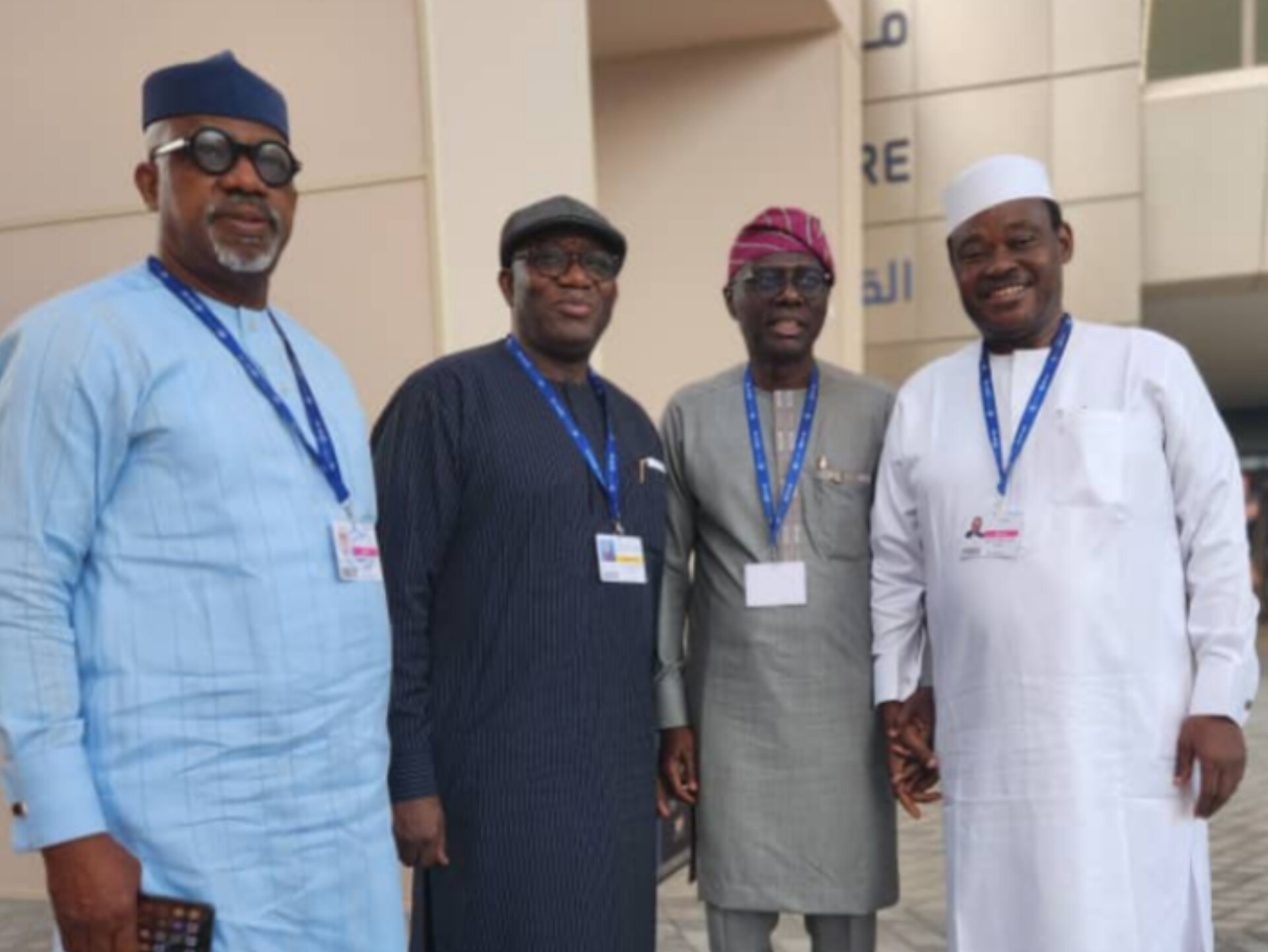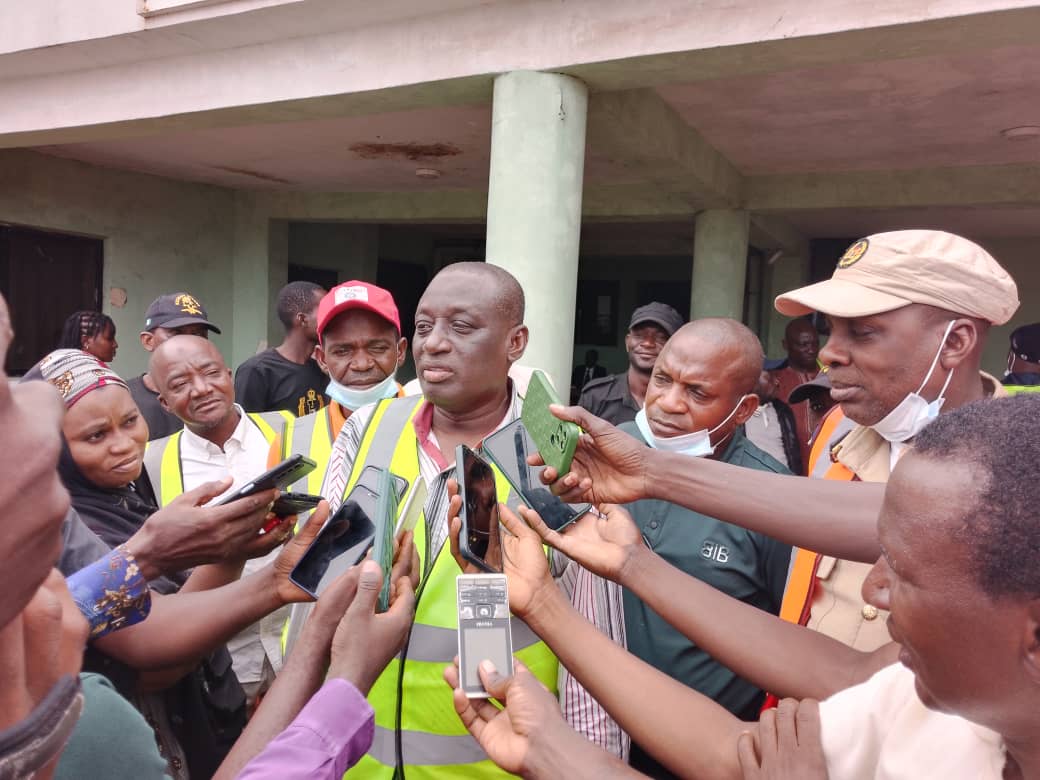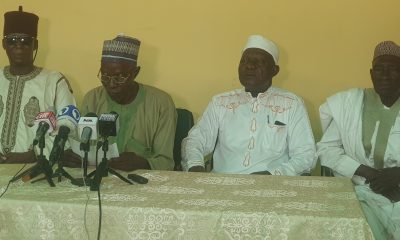Environment
Dutse emir urges youths to champion campaign against Global Warming

By Ahmed Rufa’i, Dutse
The Emir of Dutse in Jigawa state, Alhaji (Dr) Nuhu Muhammad Sanusi has enjoined the Youths to champion the campaign against global warming and other environmental degradation threatening to destabilize human existence on earth.
The emir made the call when a youth group under the aegis of the Foundation for Societal Development and Good Governance in Jigawa state paid him a curtsey visit to his palace.
According to him,, the perennial flooding, that kills people in the state and other parts of the world is one of the adverse effects of global warming that emanated from indiscriminate felling of trees, bush burning and other abuse of the ecosystem.
The emir explained that, the youths have a major role to play particularly in the area of public enlightenment against any acts capable of causing global warming and other forms of environmental degradation in the society.
Dr Sunusi also challenged the youth as leaders of tomorrow to abide by good norms and values of the society adding that they should shun any acts that may portray them as irresponsible and unreliable in the society.
In his speech during the visit, the chairman of the foundation malam Ya’u Muhammad said, they were in the palace to request the emir to be the grand patron of the Foundation as they also sought his fatherly advice.
Yau explained that, the Foundation’s focus is on promoting good governance and public participation in the democratic system.
He told the emir that, the Foundation is also enlightening the youths on the menace of drug abuse, corruption and other social vices that are causing social unrest to the individual and the society.
Environment
Jimoh Ibrahim advocates climate change liability accord

**Wants Polluters To Pay Africa for fossil oil damages
There is need for African countries to sign climate change liability agreement with all developed countries that are responsible for carbon emissions on the continent, Senator representing Ondo South Senatorial District, Dr. Jimoh Ibrahim, has indicated
The senator spoke against the backdrop of the damage industrial wastes and emissions have caused Nigeria and Africa
The Senate sharply disagreed with attempts by advanced nations which activities are causing carbon emissions to merely engage in climate change discourse and evade issues that bother on signing liability agreement.
The billionaire business mogul, who is currently in Dubai, United Arab Emirates (UAE) in company of President of Federal Republic of Nigeria Bola Ahmed Tinubu for 28th United Nations Climate Change Conference (COP28), emphasised on the need for developed countries to sign liability agreement with African countries on climate change.
Speaking on Saturday at the ongoing 28th United Nations Climate Change confab in Dubai, Senator Ibrahim insisted that developed countries must compensate Africa for carbon emissions on the continent.
He noted that if the developed countries paid compensation to African countries on the impact of climate change on the continent, it would help Africa to offset its huge foreign debt.
The Senator noted that combustion, emissions from industrial toxic wastes required no visa to cross international borders and settle on continent Africa.
Senator Ibrahim explained that “We don’t produce cars in Africa, but the whole world uses cars. These cars are produced in Germany, America, Russia, China and India.
“Imagine the number of cars in the world and the resultant consequences of burning fossil fuel are the climatic disasters we are faced with in Africa.
“Many people on the continent Africa are currently facing unexplainable medical issues that defy treatments as a result of inhaling carbon dioxide rather than oxygen.
“It is a proven fact that emissions from developed countries do no need to visit Nigeria embassy or any African countries’ embassies before gaining entry into the continent.
”It is imperative and as a matter of urgency for developed countries to sign liability agreement with African countries that bear the brunts of their activities to cushion the effects economically.”
Environment
Niger set to host 2023 Green Economy Summit

***To reposition the state for sustainable development
Niger State is set to host first ever National Green Economy Summit, billed to hold in October this year.
The summit which coincides with the United Nations Day as well as the climate advocacy group, 350 org’anization’s International Day for Climate Action, underscored the resolve to partake in achieving collective global goals through responsible local action, will open the state to the outside world.
A statement by the Secretary to the State Government (SSG) Alhaji Abubakar Usman indicated that the decision by the state to host the all important summit was informed by the realization that the Green Economy Summit will reposition the State for sustainable socioeconomic development, and to boldly make Niger State the green investment hub of Nigeria.
According to him, the summit will bring together participants including policymakers, captains of industry, academia, local and international sector experts, NGOs, international development partners, investors, and local communities.
The statement pointed out that the summit will pave the way for an inclusive green economy and a sustainable future for the state.
According to statement, the theme of the summit “Sustainable Future: Harnessing Green Assets and Innovation for Niger State’s Prosperity”, underscores the Governor’s holistic vision for the future of the state, one that embraces sustainability as a core principle.
“It recognizes the untapped potentials of its green assets. It positions innovation as a key enabler in unlocking the state’s green economy potential and achieving prosperity for all its residents”
The statement added that “by adopting the theme, the Niger State Green Economy Summit aims to inspire collaboration, knowledge sharing, and concrete actions that will lead to a greener, more sustainable, and prosperous future for the state and its people”.
Environment
Nasarawa govt takes proactive step against flooding, clear drainages

From Abel Abogonye, Lafia
Following predictions of impending flooding Nasarawa State Government has embarked on massive evacuation and clearance of the drainage system across the 13 Local Government Areas of the state to curtail the effect.
Permanent Secretary (PS), Nasarawa State Ministry of Environment and Natural Resources Malam Garba Mohammed made the disclosure while briefing newsmen on Saturday in Lafia after the June sanitation exercise.
The Permanent Secretary expressed displeasure with the attitude of some residents who dispose their refuge in the drains thereby obstructing easy passage of water.
According to him, the ministry has decided to evacuate drains for now, however in subsequent months house and shop owners would be held responsible for any blockage within their premises.
According to him, given the way flood has ravaged and is still ravaging communities in many states including some parts of Nasarawa State, the ministry will sensitized the people against any activity that can block the water ways.
On this month’s compliance, the Permanent Secretary expressed satisfaction as he applauded the traditional rulers, Chairmen of Area Councils as well as the security agencies for the success of the exercise.
He declared that 90 per cent of the residents complied by locking up their shops and businesses to clean the surrounding during the exercise.
Meanwhile 39 persons suspected to have violated environmental sanitation laws in Lafia and Karu Local Government Areas (LGAs) were arrested and prosecuted by various mobile courts in the respective LGAs.
-

 Crime6 months ago
Crime6 months agoPolice nabs Killer of Varsity Lecturer in Niger
-

 News3 months ago
News3 months agoFCT-IRS tells socialite Aisha Achimugu not to forget to file her annual returns
-

 Appointment7 months ago
Appointment7 months agoTinubu names El-Rufai, Tope Fasua, others in New appointments
-

 News From Kogi6 months ago
News From Kogi6 months agoINEC cancells election in 67 polling units in Ogori-Magongo in Kogi
-

 News From Kogi8 months ago
News From Kogi8 months agoEchocho Challenges Tribunal Judgment ordering rerun in 94 polling units
-

 News7 months ago
News7 months agoIPOB: Simon Ekpa gives reason for seperatists clamour for Biafra
-

 Metro1 month ago
Metro1 month ago‘Listing Simon Ekpa among wanted persons by Nigeria military is rascality, intimidation’
-

 News3 months ago
News3 months agoKingmakers of Igu/ Koton-Karfe dare Bello, urge him to reverse deposition of Ohimege-Igu

